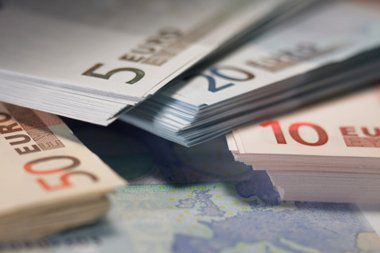
What Is a Currency Basket?
A currency basket is a set of several currencies with different weightings. It is often used to set the market value of another currency, a practice commonly known as a currency peg. Forex traders may also enter basket orders to trade several currency pairs simultaneously.
Colloquially, a currency basket may also be referred to as a currency cocktail.
Key Takeaways
- A currency basket is comprised of a mix of currencies, each with different weightings.
- A basket of currencies may be used by monetary authorities to set the value of their currency.
- Forex traders or equity investors who have exposure to different countries may use a currency basket to smooth risk.
Understanding Currency Baskets
A countries monetary authority, such as its central bank, may use a basket of currencies as a reference with which to set its own currency exchange rate, such as in the case of a pegged currency. By using a basket of foreign currencies, rather than pegging to just a single currency, the monetary authority can lower exchange-rate fluctuations.
A currency basket is also used in contracts as a way of avoiding (or minimizing) the risk of currency fluctuations. The European currency unit (which was replaced by the euro) and the Asian currency unit are examples of currency baskets. However, the most well-known currency basket is the U.S. dollar index (USDX).
The U.S. dollar index started in 1973, and today is a basket of six currencies—the euro, Japanese yen, British pound, Canadian dollar, Swedish krona, and Swiss franc. The euro is, by far, the largest component of the index, making up almost 58 percent (officially 57.6%) of the basket. The weights of the rest of the currencies in the index are—JPY (13.6%), GBP (11.9%), CAD (9.1%), SEK (4.2%), CHF (3.6%). During the 21st century, the index has reached a high of 121 during the tech boom and a low of 71 just prior to the Great Recession.
Usage of Currency Baskets
Equity investors who have exposure to different countries will use a currency basket to smooth risk. Their core investment strategies are in the equity markets, but they do not want to incur substantial losses when investing in foreign equity markets due to currency fluctuations. The same can be said for bondholders.
On the other hand, currency traders who have a broad-based view of a single currency will choose to own that currency against a variety of different currencies. For example, traders that are bullish on the U.S. dollar could use the USDX to express this view. Traders and investors can build their own currency baskets with different weightings depending on their strategy.
The weights of currencies in a basket trade are determined by the trader or according to a strategy or program. For example, if a trader wants to accumulate a U.S. dollar position, they may sell the EUR/USD, GBP/USD, and AUD/USD, as well as buy the USD/JPY, USD/CAD, USD/CHF. They put 20% of the funds into both the EUR/USD and GBP/USD. The other 60% of the funds are split between the other four currency pairs, with 15% in each.
Just like with stocks, institutional traders may need to execute large volumes in multiple currency pairs quickly. A basket order allows them to do that.
Example: Basket of USD Shorts
A basket of USD shorts is a forex trading strategy that involves selling the U.S. dollar against a group of currencies, instead of against a single currency pair. The currency group that the USD is traded against in such a situation is referred to as the basket. The strategy thus pays off if the dollar falls in value relative to several currencies at once. Using a basket reduces the trade’s overall risk exposure through diversification.


